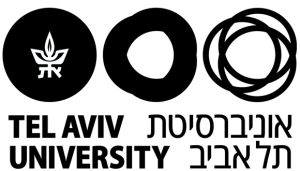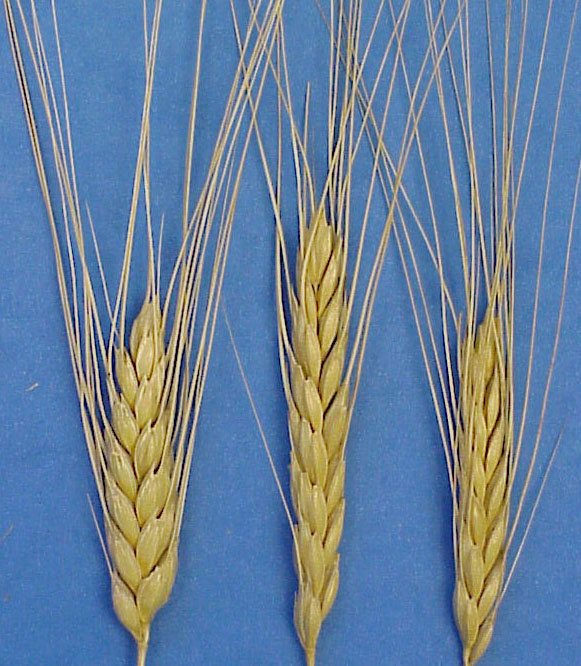Emmer, כֻּסֶּמֶת, Triticum dicoccum
Back to Floraemmer, emmer wheat, farro
כֻּסֶּמֶת (kussemet)
Triticum dicoccum
Image gallery
Biblical data
Introduction
The common noun כֻּסֶּמֶת occurs twice in the Hebrew Bible in its singular form (Exod 9:32; Isa 28:25) and once in the plural form כֻסְּמִים (Ezek 4:9). As with other plant terms, it seems that the singular form refers to the living plant itself, while the plural form refers to its usable product. It is likely that the noun is related to the qal verb כסם, which occurs twice in Ezek 44:20 in connection to hair; the Biblical Hebrew term for barley, שְּׂעֹרָה, is related to שֵֹֺׂעָר “hair.”
Distribution within the Bible
The singular form occurs once in narrative (Exod 9:32) and once in prophecy (Isa 28:25). The sole occurrence of the plural form is in prophecy (Ezek 4:9).
Parts, Elements, Features that Are Specified in the Bible
None.
Function in Context
Realistic reference to its relative lateness of growth: the flax (פִּשְׁתָּה) and barley (שְּׂעֹרָה) of Egypt are destroyed in a hailstorm because they are fully formed, while the wheat (חִטָּה) and the כֻּסֶּמֶת survive because they are אֲפִילֹת, “late in the season” (Exod 9:31–32).
Realistic reference to its use as an ingredient in bread (לָחֶם, Ezek 4:9). The geographical setting is “the land of the Chaldeans” (Ezek 1:3), or southern Mesopotamia.
Pairs and Constructions
Last in a list of six ingredients to make bread, preceded by wheat, barley, beans, lentils, and millet: חִטִּין וּשְׂעֹרִים וּפוֹל וַעֲדָשִׁים וְדֹחַן וְכֻסְּמִים. The fact that nothing like this list of ingredients appears elsewhere in the Hebrew Bible in relation to bread suggests that this is probably not ordinary bread.
Preceded by nigella, cumin, wheat, and barley as examples of items that can be planted: הֲלוֹא֙ אִם־שִׁוָּ֣ה פָנֶ֔יהָ וְהֵפִ֥יץ קֶ֖צַח וְכַמֹּ֣ן יִזְרֹ֑ק וְשָׂ֨ם חִטָּ֤ה שׂוֹרָה֙ וּשְׂעֹרָ֣ה נִסְמָ֔ן וְכֻסֶּ֖מֶת גְּבֻלָתֽוֹ (Isa 28:25).
Contributor: Dr. Raanan Eichler, Department of Bible Studies, Bar Ilan University
History of Identification
Identification History Table
| Hebrew | Greek | Aramaic | Syriac | Latin | Arabic | English | |||||
| Reference | MT | LXX | Revisions | Targumim | Peshitta | Vulgate | Jewish | Christian | KJV | NRSV | NJPS |
| Exod 9:32 | כֻּסֶּמֶת | ὀλύρα = the same as, or a variety of, ζειά (LSJ); see below |
O: כוּנָתַיָא / כוניתא = spelt or emmer (CAL) PJ: כונתיא N: כונתיה GTD: כוּפְפִיָיתָא = spelt (CAL, citing only this occurrence) S: קטניתה = a type of legume (CAL) |
kwntˀ = spelt or emmer (CAL) |
far = a sort of grain, spelt (LS) |
rie (rye) | spelt | emmer | |||
| Isa 28:25 | כֻּסֶּמֶת | ζέαν = Triticum monococcum or Triticum dicoccum (LSJ) |
כוּנָתִין | kwntˀ | viciam = vetch (LS) |
rie | spelt | emmer | |||
| Ezek 4:9 | כֻסְּמִים | ὄλυραν | כוּנָתִין / כותנין | kwntˀ | viciam | fitches | spelt | emmer | |||
Discussion
The Septuagint renders the term as ζειά or ὀλύρα, and the Vulgate on Exod 9:32 renders it as far. The Peshitta and most Targumim use kwntˀ. All of these terms denote variants of wheat.
In contrast, the Vulgate on Isa 28:25 and Ezek 4:9 has vicia, while the Samaritan Targum on Exod 9:32 uses קטניתה. Both of these terms denote types of legumes.
In the tradition of identifying כֻּסֶּמֶת / כֻסְּמִים as a variant of wheat, the term has often been translated into English as “spelt.” However, most modern specialists reject this identification and favor an identification with a different variant of wheat: emmer.[1]
End Notes
[1] Löw 1924–34, 1:767–76; Feliks 1967, 29–30; Feliks 1968, 149–51; Kislev 1973, 86; Zohary 1982, 74–75; Amar 2012, 134–37.
Bibliography
Amar, Zohar. 2012. Flora of the Bible : a new investigation aimed at identifying all of the plants of the Bible in light of Jewish sources and scientific research. Jerusalem: Rubin Mass (Hebrew).
Feliks, Yehuda. 1967. Mixed sowing breeding and grafting. Tel Aviv: Dvir (Hebrew).
_____. 1968. Plant world of the Bible. Ramat-Gan: Masada (Hebrew).
Kislev, Mordechai. 1973. “ḤIṬṬA AND KUSSEMET, Notes on their Interpretations.” Lĕšonénu: A Journal for the Study of the Hebrew Language and Cognate Subjects 37(2/3): 83–95; 37(4): 243–52.
Löw, Immanuel. 1924–34. Die Flora der Juden. 4 vols. Vienna and Leipzig: Löwit and Kohut.
Zohary, Michael. 1982. Plants of the Bible. London: Cambridge University Press.
Contributor: Dr. Raanan Eichler, Department of Bible Studies, Bar Ilan University

